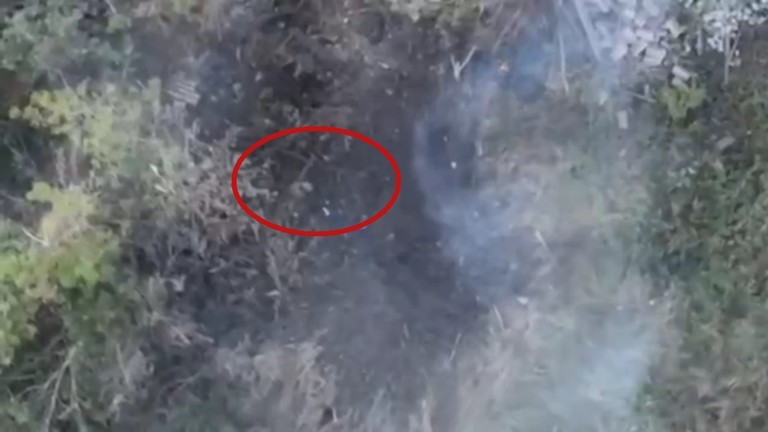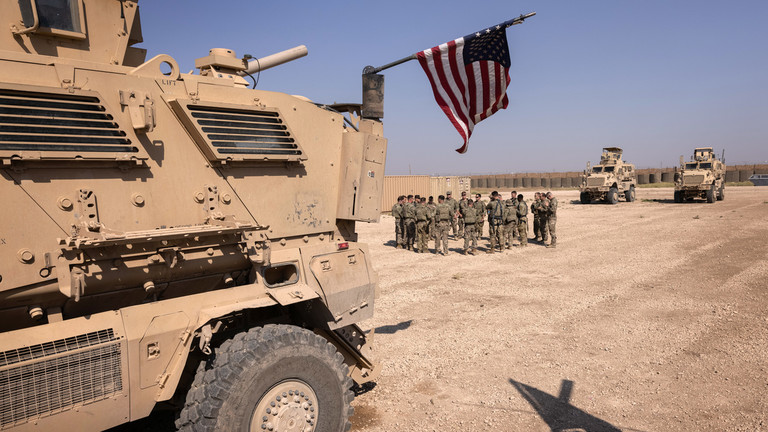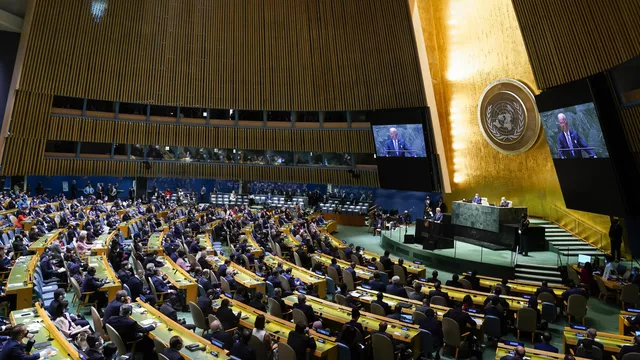Hamas Official Says US No Longer Seen as Negotiator Capable of Bringing About Ceasefire
©AP Photo/Evan Vucci
Hamas Political Bureau member Osama Hamdan said in an interview with the Associated Press that the United States is no longer seen as a reliable negotiator capable of bringing about a ceasefire in the Gaza Strip.
Hamden said Hamas does not see Israel engaging in good faith in the ceasefire negotiations and does not believe the Biden administration can pressure Israeli Prime MInister Benjamin Netanyahu’s war cabinet to ink a deal.
Hamas would only participate in Thursday's talks if negotiators were to discuss Israel’s peace deal that US President Joe Biden announced in May without any new additions, he said.
"We have informed the mediators that … any meeting should be based on talking about implementation mechanisms and setting deadlines rather than negotiating something new," the outlet quoted Hamden as saying. "Otherwise, Hamas finds no reason to participate."
On Tuesday, Hamas representative in Lebanon Ahmed Abdel Hadi told Sputnik that the Palestinian movement will not participate in the negotiations on a ceasefire in the Gaza Strip scheduled for August 15.
Last week, Egypt, Qatar and the United States called on Israel and Hamas to resume talks on the terms of a ceasefire on August 14-15. The three countries' leaders said they were ready to present a final proposal to reach a deal.
US Secretary of State Antony Blinken postponed his planned trip to the region amid the uncertain situation in the region and Iranian plans to attack Israel.
'Complete Hypocrisy' - US Continues to Serve Israel as Fear of Middle East Conflict Grows
Hamas has reportedly expressed that they no longer see the US as being able to bring about a deal that would solidify a ceasefire in the Gaza Strip. And following the assassination of one of their leaders, the US has continued to support Israel indefinitely.
Tensions in the Middle East are growing as Israel anticipates a retaliatory attack from Iran in response to the assassination of Hamas political chief Ismail Haniyeh. The US has expressed their full support of Israel, and approved an $18.82 billion sale of 50 F-15IA multirole fighter jets and other related equipment to the Israeli government, the Defense Security Cooperation Agency (DSCA) said on Tuesday.
On Wednesday, Robert Fantina, an author, journalist, and activist joined Sputnik’s The Backstory to discuss the growing tensions in the Middle East, as well as the prevalent hypocrisy of the US in its interference of the region.
“Yes, this is just showing the cracks in the facade of a united Israeli government because that doesn't exist. There are people there, I hate to call them more reasonable minds because I don't think anyone there is reasonable, but they recognize that there cannot be victory over this ideology,” Fantina explained.
“The people of Palestine in the Gaza Strip, the West Bank, and Jerusalem and so on have been oppressed by the Israelis for decades and they are angry. They want their basic human rights that are guaranteed to them under international law. So, Israel can kill as many Palestinians, unless it kills the entire population, Hamas - the resistance anyway - is going to continue to exist and grow in one form or another.”
“What's required to defeat Hamas is adherence to international law, the removal of the illegal settlers from the West Bank. The establishment of Palestine, at least, on the pre-1967 borders and peace. The slaughter of innocent men, women and children in Gaza isn't going to defeat Hamas,” the journalist added.
Osama Hamdan, a Hamas Political Bureau member, said in an interview that the US is no longer being seen as a reliable negotiator who is capable of bringing about a ceasefire in Gaza, Sputnik reported on Wednesday. The bureau member added that Hamas no longer sees Israel as negotiating in good faith and that they believe the Biden administration can no longer influence Israel to make a deal.
Ahmed Abdel Hadi, a Hamas representative in Lebanon, also told Sputnik that Hamas will not participate in ceasefire talks that were scheduled for August 14-15. This follows the Israeli assassination of Ismail Haniyeh, the political leader of Hamas, who was attacked while in the Iranian capital of Tehran on July 31.
“And Hamas leaders have said that the agreement that US President Joe Biden introduced back in May was acceptable to them - Biden at the time said it had been accepted by Israel. As soon as Hamas said that they would accept it, Israel began moving the goalposts, wanting more conditions, putting things, putting in conditions that Hamas simply wasn't going to allow and agree to,” said Fantina.
“Since October 7th, people in Israel are angry that there are still hostages being held by Hamas and they want him to get them released and the best way to do that is by having a ceasefire. However, the most radical right-wing members of his cabinet are threatening to resign from the government if he agrees to a ceasefire, which would then cause the government to dissolve and would require new elections,” Fantina explained.
“Netanyahu knows he would not win in another election. He's also under indictment for some very fairly serious charges and he hopes that by maintaining the office of prime minister he will not have to be accountable for those. So, he wants to stay in power, he wants to stay out of prison and in order to do that he has to appease these right-wing zealots in his cabinet,” he added.
“But the facts are, as you stated, Hamas has made concessions, has compromised as people do when they're trying to make an agreement of any kind - each side has to give a little to get what it wants. Hamas has done that. It's Israel that keeps saying no. That once the agreement is basically in place, Israel decides on some other conditions that it wants. So a ceasefire is not in Benjamin Netanyahu’s best interest for himself.”
Iranian Supreme Leader Ali Khamenei has vowed to retaliate for the assassination of Hamas negotiator Ismail Haniyeh in Tehran whom he referred to as a “dear guest in our home”, though speculation about how or when Iran will strike continues.
Meanwhile, the US has continued its military support of Israel by stockpiling the country with shipments as ordered by US Secretary of Defense Lloyd Austin Iranian acting Foreign Minister Ali Bagheri has suggested that retaliation from Iran will help stabilize the region rather than disrupt it, Sputnik reported on Tuesday.
“It’s complete hypocrisy. The US spokespeople say they’re working tirelessly for a ceasefire. They, the US is providing the weaponry that's causing this genocide, that's being used in this genocide. So, the US could have ended this, this genocide on day one or any time since then by simply telling Israel no more money, no more weapons,” said Fantina.
“Israel is interested in fostering more war in the area, getting more support from the US, eliminating any potential rivals in the Middle East, whether that's military rivals or economic rivals. And, Iran is their chief rival for power influence in the Middle East. So if Israel can foment a war with Iran, knowing that the US will come to its defense, well, that's in Israel's best interest as a rogue and pariah state,” he explained.
The office of the Palestinian Authority’s president is reportedly holding the US government accountable after approximately 100 people, including at least 11 children and six women, were killed this weekend from a bombing attack in which US-provided missiles were used. At least 6,000 displaced Palestinians were being housed at the al-Taba’een (or Al-Tabin) school when bombs struck the school at about 4:30 AM on August 10, said Mahmoud Bassal, the Gaza civil defense spokesman.
Nabih Abu Rudeineh, the spokesperson for the Palestinian presidency, condemned the attack and said the Palestinian Authority held the Biden administration “responsible for the massacre due to its financial, military, and political support for Israel,” cited a report from Common Dreams.










